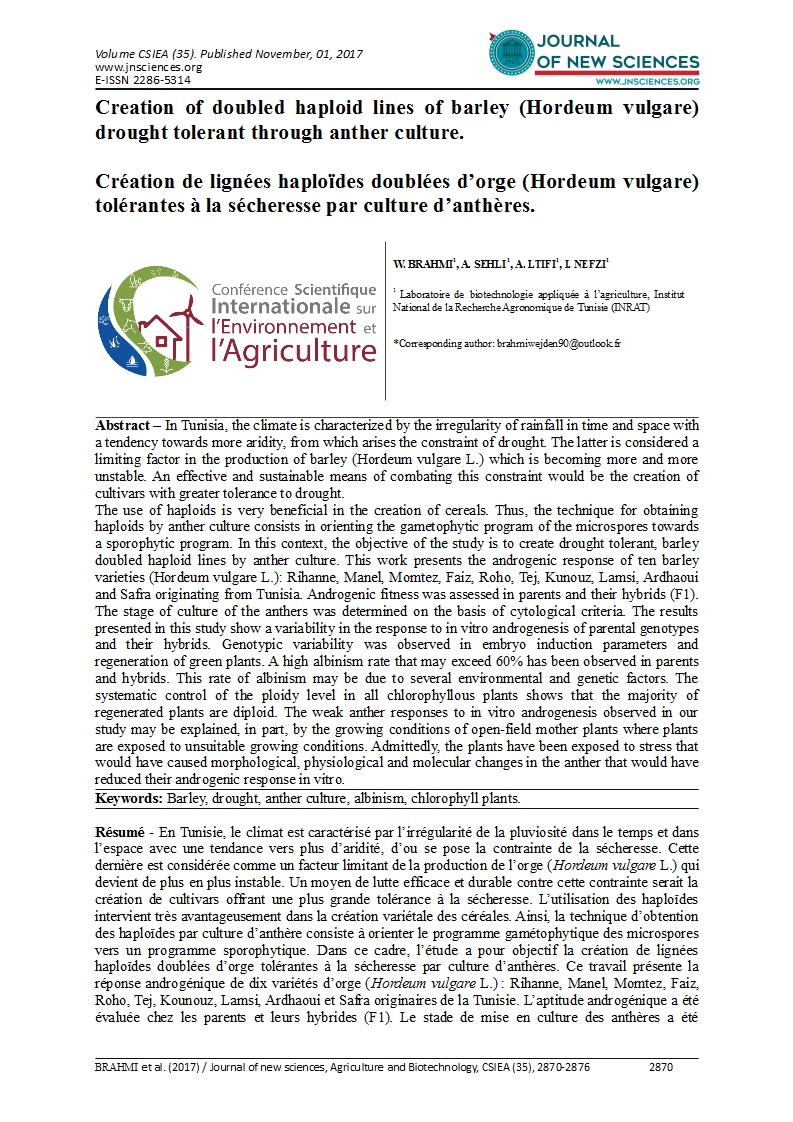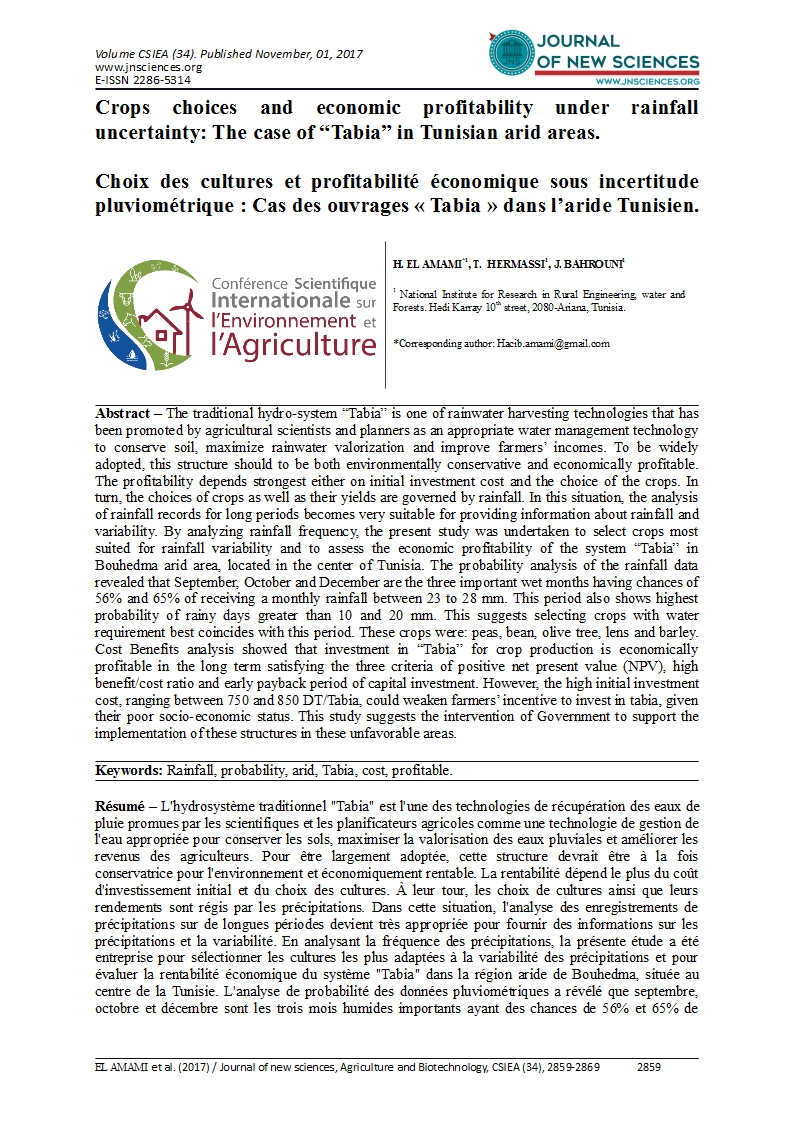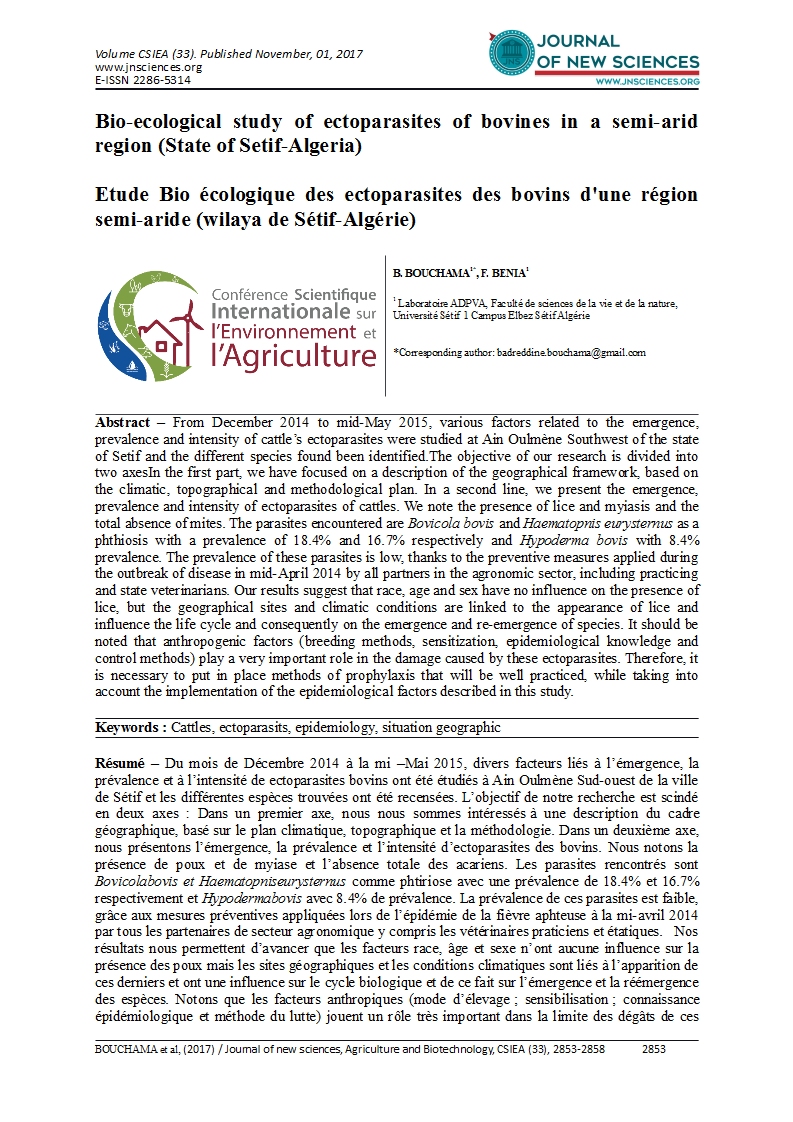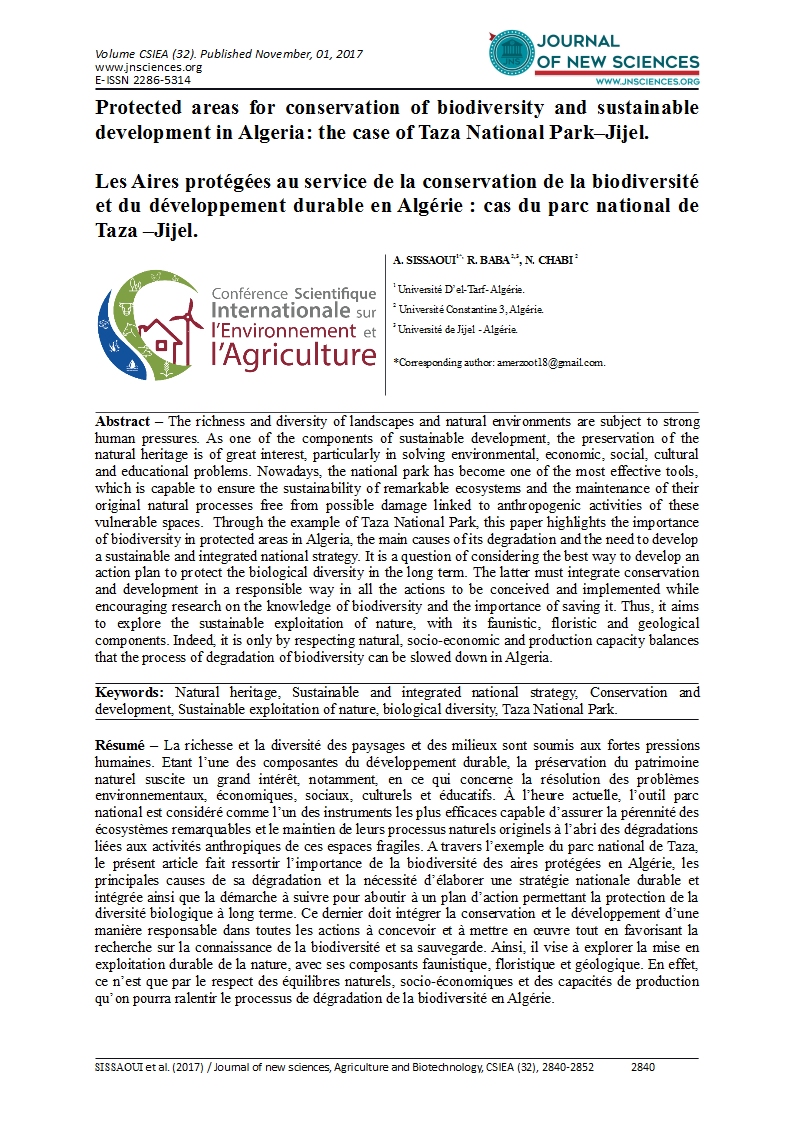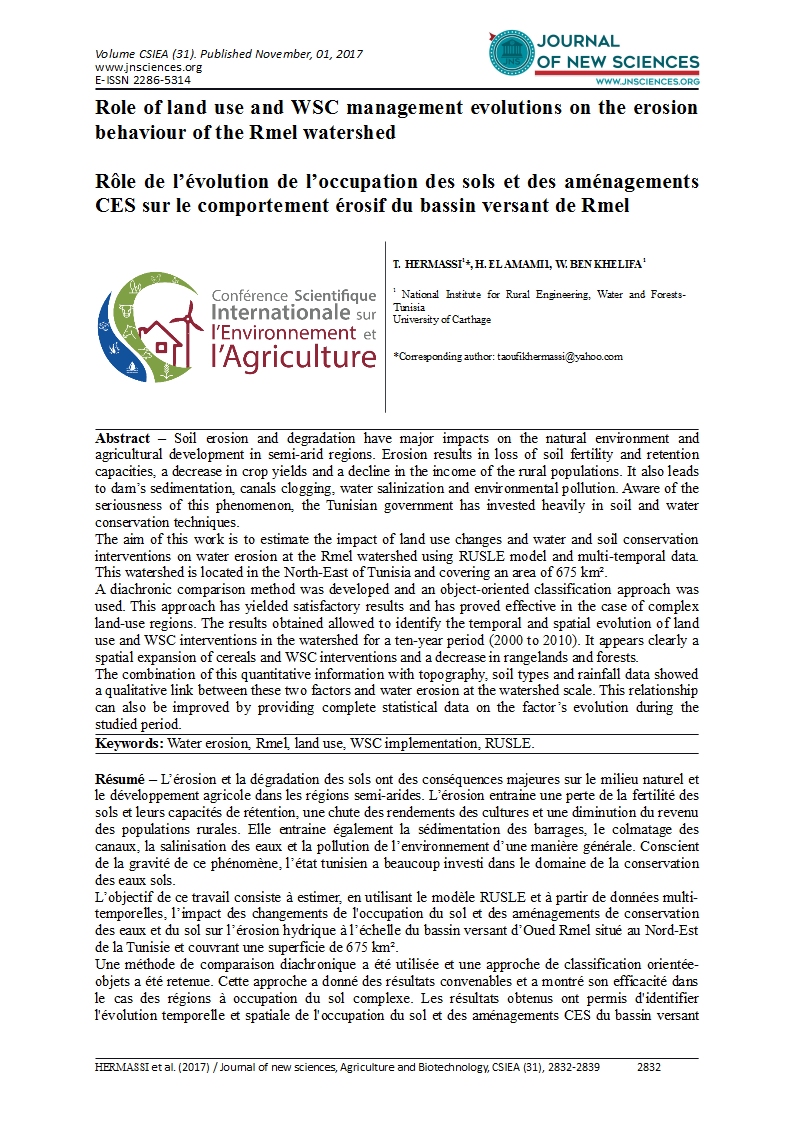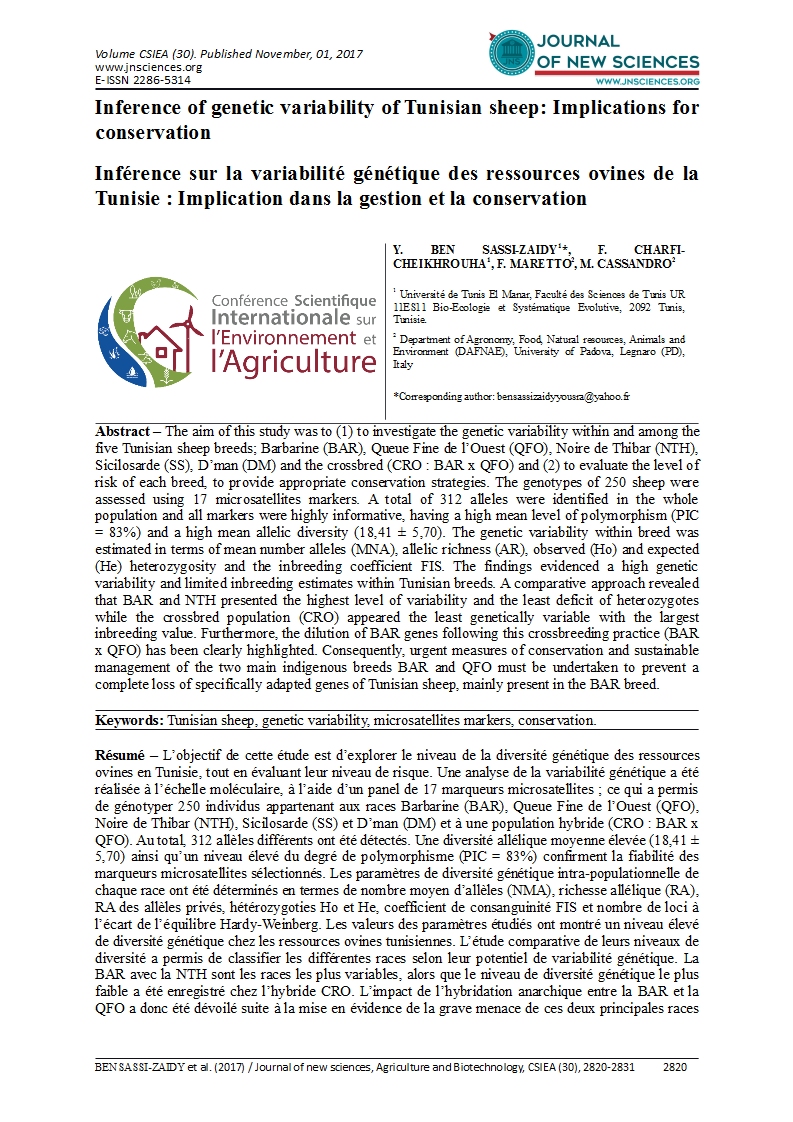- Category: Volume spécial (Conférence CSIEA 2017)
- Hits: 12200
Socio-economic implications of global change on rainfed agriculture in Tunisia: A Case Study of Lebna Watershed.
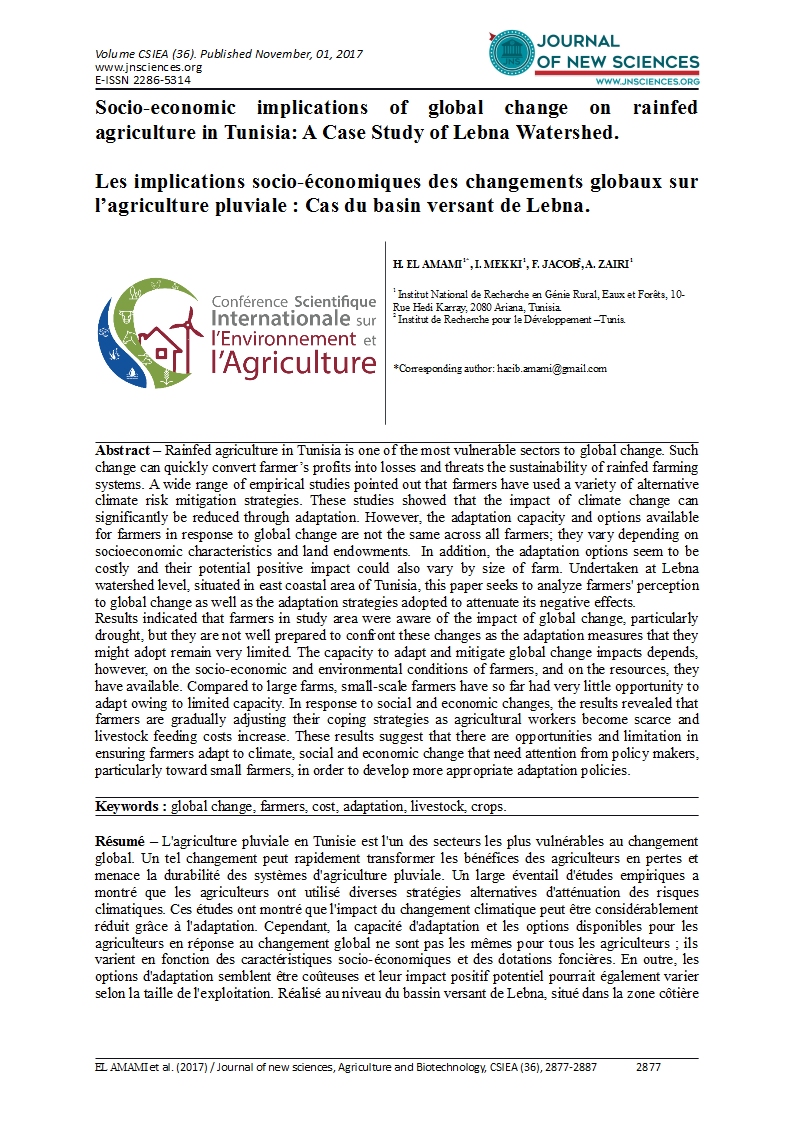
Les implications socio-économiques des changements globaux sur l’agriculture pluviale : Cas du basin versant de Lebna.
|
|
H. EL AMAMI 1*, I. MEKKI1, F. JACOB2, A. ZAIRI1
1 Institut National de Recherche en Génie Rural, Eaux et Forêts, 10-Rue Hedi Karray, 2080 Ariana, Tunisia. 2 Institut de Recherche pour le Développement –Tunis.
|
Abstract – Rainfed agriculture in Tunisia is one of the most vulnerable sectors to global change. Such change can quickly convert farmer’s profits into losses and threats the sustainability of rainfed farming systems. A wide range of empirical studies pointed out that farmers have used a variety of alternative climate risk mitigation strategies. These studies showed that the impact of climate change can significantly be reduced through adaptation. However, the adaptation capacity and options available for farmers in response to global change are not the same across all farmers; they vary depending on socioeconomic characteristics and land endowments. In addition, the adaptation options seem to be costly and their potential positive impact could also vary by size of farm. Undertaken at Lebna watershed level, situated in east coastal area of Tunisia, this paper seeks to analyze farmers' perception to global change as well as the adaptation strategies adopted to attenuate its negative effects. Results indicated that farmers in study area were aware of the impact of global change, particularly drought, but they are not well prepared to confront these changes as the adaptation measures that they might adopt remain very limited. The capacity to adapt and mitigate global change impacts depends, however, on the socio-economic and environmental conditions of farmers, and on the resources, they have available. Compared to large farms, small-scale farmers have so far had very little opportunity to adapt owing to limited capacity. In response to social and economic changes, the results revealed that farmers are gradually adjusting their coping strategies as agricultural workers become scarce and livestock feeding costs increase. These results suggest that there are opportunities and limitation in ensuring farmers adapt to climate, social and economic change that need attention from policy makers, particularly toward small farmers, in order to develop more appropriate adaptation policies.
Keywords : global change, farmers, cost, adaptation, livestock, crops.

